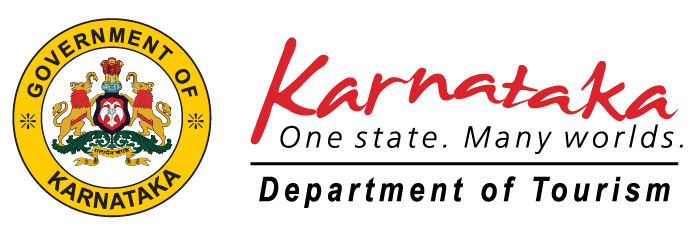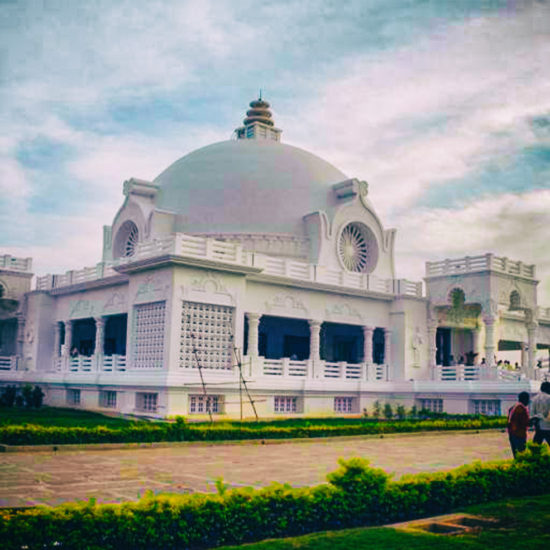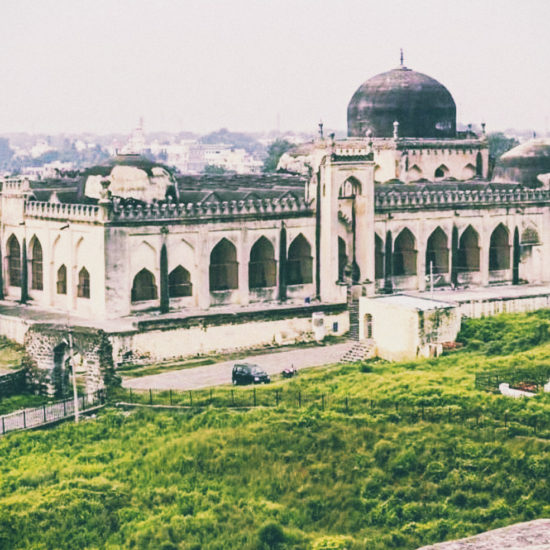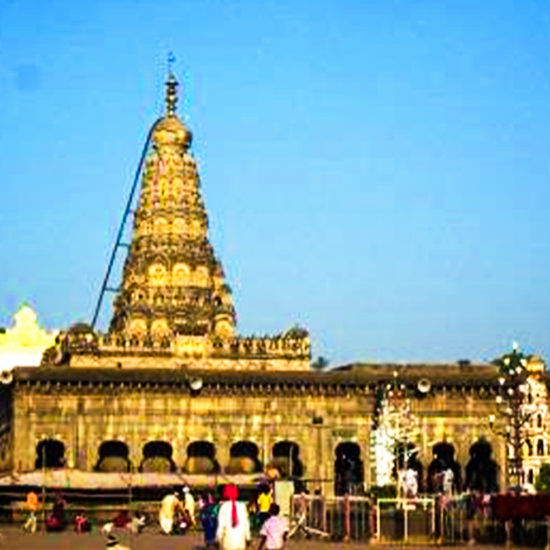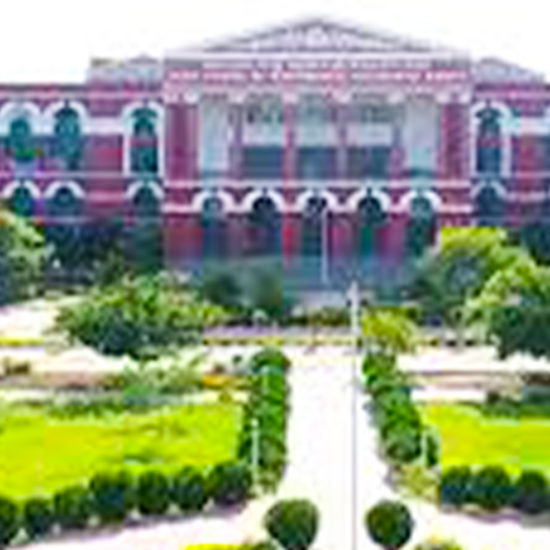Situated in the North Karnataka region, the district of Kalaburagi (formerly called as Gulbarga) forms part of the Deccan Plateau and shares its borders with Maharashtra and Telangana. Among the three districts of the former Hyderabad Karnataka area, it became part of Mysore (Karnataka) after the reorganization of States in 1956. Kalaburagi district is surrounded by Yadgir in the south, Vijayapura and Maharashtra in the west, Bidar in the north and Telangana State in the east.
Kalaburagi, one of the largest districts in Karnataka, is a land where the past blends with the present. It is noted for its long historical and cultural heritage spanning many centuries. This historically rich region of the Deccan has been part of a number of kingdoms. Ruled by dynasties such as the Shatavahanas, the Chalukyas of Badami, the Rashtrakutas, the Chalukyas of Kalyana, the Kalachuris, Bahman Shahis and the Adil Shahis of Bijapur respectively. Having a glorious cultural past, this region was also famous as a centre of Buddhism in Sannati. But Sannati came into further prominence by the chance discovery of Major Rock Edicts of Ashoka; which was the first such discovery in south India. A treasure-house of architectural delights, Kalaburagi is justly famous for the grandeur of the many Indo-Saracenic monuments that dot the landscape, making it a destination that takes one back through the pages of history.
Being a part of the Deccan Plateau, it has fertile black cotton soil and two major rivers Krishna and Bhima along with their tributaries like Kagina, Amaraja and Bennetore have provided suitable environ for human habitation from many centuries ago. The Upper Krishna Project is a major irrigation venture in the district. Major crops grown here include Bajra, Toor, Sugarcane, Groundnut, Sunflower, Sesame, Castor Bean, Black Gram, Jowar, Wheat, Cotton, Ragi, Bengal Gram and Linseed. Jolada Rotti, Tahari and Bele Hoorana Holige is the must-try delicacies here.
For further information, visit the official district website click here!
Heritage Sites
- Kalaburagi (Gulbarga) Fort: Said to have originally been built by Raja Gulchand of Warangal, Gulbarga Fort was later strengthened by Alauddin Hasan Bahman Shah, the ruler of the Bahmani dynasty. The fort, occupying an area of 20 acres with a circumference of 3km, has a double fortification with a 30ft moat between the walls, and reflects a blend of West Asian and European military architecture. The fort has 15 bastions with some 26 guns. One of the canons is about 25 ft long. Bahmani Sultans had the longest rule in Kalaburagi between 14th and 16th Over time Kalaburagi Fort has been under the rule of Rashtrakutas, Chalukyas, Kalachuris of Kalyani, Yadavas of Devagiri, Vijayanagara Empire, Hoysala Kingdom and Sultanate of Delhi. Bahmani Sultans had the longest rule over Kalaburagi.
- Malkheda Fort: Malkhed is a place of historical importance situated around 40 km south-east of Gulbarga, on the left bank of Kagina river, a tributary of the Bhima River. Earlier known as Manyakheta, it is also believed to be the capital of Rashtrakuta kings. Malkhed today has the remains of a fort with four entrances and 52 bastions. And in the village, there is an ancient Mallinatha Basadi, which consists of a garbhagriha, a navaranga and a hazara. Some 59 manuscripts in Prakrit, Sanskrit and Kannada languages have been found in this Basadi. Two temples namely lshwara Temple and Hanumanta temple are also located here. In the fort, a Jumma Masjid and few darghas are found here.
- Chor Gumbaz: Located on a hill, the Chor Gumbaz is an attractive monument with a 30m high hemispherical dome, and corner towers with arches on each side, though it does not have the proportions of the famed Gol Gumbaz in Vijayapura. But like the Gol Gumbaz, this monument also echoes and at least seven echoes can be heard inside here.
- Sannati and Kanaganahalli: Located 19 km north of Shahpur, this place can be reached easily by a boat from Shirival on the river bank. Locally called 'Sonthi', this village is a situated on the left bank of River Bhima. It is an important archaeological site as Sannati and Kanaganahalli has seen the discovery of Old Stone Age tools, Major Rock Edicts of Ashoka as well as Buddhist sculptures including a Mahastupa from the Satavahana period, Roman pendent and pottery. 4 inscriptions of Ashoka's time (3rd Century BC) and 77 inscriptions of the Satavahana period (2nd-4th Century AD), all in Prakrit language and Brahmi script, have so far been reported from Sannati. It is noteworthy that this is the only site where Brahmi inscriptions are found in such large numbers. And the oldest of the Brahmi inscriptions reported from here are the 4 fragmentary inscriptions of Ashoka's reign. Of these, two are Ashoka's Major Rock Edicts while the remaining two are Special Edicts. The discovery of these 2 Major Edicts assume significance as before this discovery, only Minor Edicts had been discovered in Karnataka. Thus, it becomes clear that in addition to being a place of Buddhist importance Sannati was an important commercial centre as it had contacts with Rome.
- Buddha Vihara: The Buddha Vihara is located 6 kms from the district headquarters near Gulbarga University and was inaugurated by the Hon. President of India in January 2009. Buddha Vihara is a modern-day monument spread over 18 acres. It has a main building, a meditation centre at the cellar and a Lord Buddha chaitya (temple in Pali) on the ground floor. The dome of Buddha Vihara is built on traditional Buddhist architecture and is 70 ft in height and 59 ft in diameter. The dome has an ornamental spire made of panchaloha with a kalasha on top, also made of panchaloha. Buddha Vihara is surrounded by four 48ft tall Ashoka pillars in the four corners in honour of Emperor Ashoka. The main attraction in the prayer hall complex is a gold coated 8.5 ft tall panchaloha statue of the seated Buddha which is believed to be the tallest Buddha statue in South India. Each block has a carving representing the architecture of Buddha temples of Ajanta, Ellora, Nagpur, Bodh Gaya, Saranath, Rajgir, Lumbini, Kusinara, Thailand, Singapur, Sri Lanka, Tibet, Japan and Rome. The floor of the hall has a seating capacity of 1500. The Dhyana Mandir (meditation hall) in the main complex has a 6.5 ft tall black granite Buddha statue. A perfect way to get relaxation and peace of mind is when you see the smiling face of Buddha which is accompanied by the chanting of the mantras. An open-air theatre with a 2,500-seat capacity, four large Mahadwaras (arches) known as Sanchi gates and a group of 11 cement statues led by a bronze statue of Dr B R Ambedkar are other highlights here. Buddha Vihara also houses a dormitory, a library, study centre, kitchen, dining hall, conference hall, exhibition hall and guest rooms.
Religious Places
- Sharana Basaveshwar Temple: A leading light of the Veerashaiva movement, Saint Sharana Basaveshwara was active in the Gulbarga region. A temple was built in due course, over his tomb, after he attained Samadhi in 1822. The temple took its present form in the early 20th century and displays beautiful pillars, arches and pilasters. The sabhamandapa, which is constructed by using pilasters, independent pillars, and 36 arches, is very attractive and its pillars are decorated with peacock, garuda, naga, parrot, elephant, lion, flowers and creepers. The pranala of the garbhagriha is noteworthy for being in the form of a cow feeding its young. Makara Sankranti and Vijayadashami festivals are major festivals celebrated here. The Sharana Basaveshvara Mahadasoha Pitha is also engaged in jnana-dasoha (spreading education) through the institution called "Shri Sharana Basaveshvara Vidya Samsthe".
- Jumma Masjid: Completed in 1367, this grand mosque inside the Kalaburagi Fort is a delightful monument that is still well-preserved. Resembling the mosque at Cordoba in Spain, the Jumma Masjid covers an area of over 38,000 sq ft. This distinctive Mosque which displays a strong Persian touch in its architecture, is supported on 140 pillars. It has 250 arches, 5 large domes and 63 smaller domes. Its interior surface is decorated with flowers and creepers.
- Chandrala Parameshwari Temple, Sannati: Although the historic discoveries of Buddhist and Roman importance have certainly added to the fame of Sannati/ Kanaganahalli but it is the Chandrala Parameshwari Temple that is the chief centre of attraction for the tourists. Located in Sannati along the River Bhima is the Chandrala Parameshwari Temple. Located on a mound likely having the remains of the Maurya period, this Temple is believed to be erected during the Rashtrakuta period and enlarged during the rule of the Chalukyas of Kalyana. The gopura, which is in Dravida style, is very attractive on account of the beautiful sculptures. This east-facing temple located within a large compound consists of a garbhagriha, an open antarala and a navaranga with a spacious sabhamandapa attached to it. In the garbhagriha is a bronze prabhavali carved with Sarpa, Mahakali, Lakshmi and Saraswati as also dhvaja, sankha and charka. In front of this, are small sculptures of Goddess Mahakali at the right, Srichakra in the centre and at the left is Goddess Chandrala Parameshwari, being the chief deity here. In the compound of the temple, slightly behind to the left is the renovated temple of Goddess Adishakti (Kalika). In fact, the damaged Ashokan inscriptions were on the pitha of Goddess Kalika and were discovered during renovation of this temple. The roof of this temple in this complex had collapsed and the disturbance revealed slabs with inscription in Brahmi script and Prakrit language. One of the slabs was used as a pedestal for the deity's idol. The inscription was later discovered as Ashoka's Major Rock Edicts belonging to around 3rd Century BC. Till date, these inscriptions are the only Major Rock Edicts discovered in Karnataka as before this discovery, only Minor Edicts had been discovered in Karnataka. The slab with inscription was shifted to nearby Kanaganahalli excavation site.
- Sedam: Sedam is a taluk headquarter in Kalaburagi district. Located on the banks of river Kagina, Sedam is known for its rich heritage of historical monuments and Jain Temples and mosques. Most temples in Sedam were built between 10th and 12th century AD, during the rule of Kalyana Chalukyas. Panchalingeshwara Temple complex, Manikeshwara Temple and Marulinga Temple are Sedam’s most notable temples
- Uttaradi Matha: Outside the village, nearby to Malkhed is the Uttaradi Matha of the Madhva tradition. Akshobhyatirtha, who was the last among the disciples of Madhvacharya to have adorned the Madhva Pitha, is understood to have composed a work called 'Vedasara-stotra'. His vrindavana is located here. Similarly, the vrindavana of his disciple, Jayatirtha also known by the epithet of Tikacharya is also located here. Jayatirtha enriched the field of Dvaita Vedanta through his more than 22 works comprising Tatva Sankhyana Tika, Vishnu Tatva Nirnaya Tika, Tatvaprakasika, Nyayasudha etc. In addition to these, there are the vrindavanas of Raghunathatirtha, Vyasatirtha, Satyanidhitirtha and others. Apart from these, there are temples of Venugopala, Hanumanta, Lakshmi, etc. besides the Gangadharamutya Matha and Karanika-mutya Matha.
- Chayabhagawati: Chaya Bhagavati is a pilgrimage centre home to more than 100 holy water ponds and known for Chaya Bhagawati temple, 65 kms south west of Surpur. Chayabhagawati is located on the banks of Krishna river and a scenic venue as well.
- Devara Ganagapura: Devara Ganagapura is a famous pilgrimage centre on the left bank of the Bhima River located on Gulbarga-Afzalpur road. The Bhima and the Amaraja rivers meet about three km away south-west from here and these waters, especially at the spot of their confluence, are considered extremely holy. At the meeting point of these rivers there are temples of Sangameshwara and Narasimha as also the hill of the sacred ash (bhasmadagudda). On the Sangama-Ganagapur road, eight tirthas namely Shatkula, Narasimha, Chakra, Manmatha, Bhagirathi, Papavinasi, Koti and Rudrapada can be seen. In the village there is the Dattatreya Temple of Narasimha Saraswathi Swami who is believed to be the second incarnation of Dattatreya. Before leaving for Srishaila, Narasimha Saraswathi Swami left behind Nirgunapaduka (sacred sandals) which are also worshipped by the devotees. A five-day fair takes place here in the month of February in which thousands of devotees participate. The matha here also runs a Sanskrit Veda Sala.
- Aland: Aland is a town 45 kms from Kalaburagi, known for Hingul Ambika Temple, Sri Bhagyavanthi Temple, Sri Sidharameshwar Mahaswamiji Math, Hazrat Khwaja Shaikh Makhdum Allauddin Ansari, Sri Hanuman Temple, Dawal Malik Dargah and Sri Revana Siddheswar Temple.
- Jevargi: Jevargi, a town 42 kms from Kalaburagi can be visited for Masjid-e-bilal, Sridevi Temple and Hanuman T
- Kalgi: Kalgi village in Kalaburagi is known for underwater Narasimha Temple, Siddheshwara Temple and Jamia Masjid.
- Gurudwara Sri Guru Nanak Math: Located right inside Kalaburagi city on the banks of Appana kere, Gurudwara Sri Guru Nanak Math is a popular Sikh religious and community centre in Kalaburagi.
- Ladle Mashak Dargah: Aland Ladle Mashak Dargah is a religious place in Aland, Kalaburagi set up by Allauddin, popularly known as Ladle Mashaikh
- Temples in Kalaburagi city: Sharana Basaveshwara temple, Sai Mandir and Ram Madir.
- Budda Vihar: Budda Vihar is 6 kms from Kalaburagi on Sedam Road near Gulbarga University, spread over 18 acres. Buddha Vihar has a main building, a meditation centre at the cellar and a Lord Buddha temple on the ground floor. The dome of Budda Vihar, built with marble stone in traditional Buddhist architecture is 70 ft in height and 59 ft in diameter. The dome has an ornamental spire made of pancha loha (five metals) with a kalasha on top of it (also made of pancha loha). Buddha Vihara is surrounded by four 48 ft tall Ashoka pillars in its four corners in honor of Samrat Ashoka.
- Dargah of Khwaja Banda Nawaz: The Dargah of a Sufi saint Khwaja Banda Nawaz who is believed to have lived in Gulbarga from 1407 to 1422. He wrote many works in Urdu and Persian. It is located amidst the innumerable small and large tombs in a spacious compound. Though of great dimension, the simple walls of this Dargah are decorated with verses from the Quran painted in gold as well as paintings in Turkish and Iranian styles. Beside this is located the Dargah of the saint's son. In the library located nearby there are about 10,000 books on history, philosophy, religion etc in Urdu, Persian and Arabic languages. The annual Urus of the saint, draws devotees from around the country.
- Marthur: Known for Kasivisheshwara Temple and other ancient temples
- Mannur: Popular for Keshava Temple
- Afzalpur: Popular for 12th century Mallikarjuna Temple, the Mahal Mosque and Panch Mahal (also known as Afzalkhan Mahal from Adilshahi times, now in ruins)
Tourist Attractions
- Chincholi Wildlife Sanctuary: Chincholi Wildlife Sanctuary was declared a sanctuary in 2011and extends over 134.88 Sq.kms. It is the first dry land Wildlife Sanctuary in South India. This is the only area in the Hyderabad Karnataka Region with rich floristic diversity. The forest hosts rich biodiversity. Apart from medicinal herbs and trees, species like Red Sanders and Sandalwood are found abundantly. The Sanctuary has good dry deciduous and Moist deciduous forest in the core with Acacia and Teak plantations on the fringes. Apart from Chandrampalli dam, four small dams exist at its Centre. The forest is also home to fauna like Black Buck, Common Fox, Four-horned Antelope, Fruit bat, Hyena, Indian Wolf etc. Over 35 species of birds, including Black Drongo, Black winged Kite, Blossom - headed Parakeet, Blue pigeon, Black-headed Oriole and Grey partridge are also found in this Sanctuary.
- Chandrampalli Dam: Chandrampalli is a lovely tourist spot in the Gottam Gutta mountain range and is situated amidst abundant natural beauty. Here a dam has been built across the river Bhima. Its location amidst the hilly surroundings offers memorable experience to tourists. The dam was constructed in the year 1973 and has 6 spillway gates. Gottam Gutta is amidst the hills located 7 km away from Chandrampalli. It is adventurous to trek the hills up and down to reach Gottamgotta from the backwaters of Chandrampalli Reservoir. There are temples of Bakkaprabhu, Hanumanta and Durgadevi in these hills.
- Kesaratagi Garden: Kesaratagi Garden in the city will delight anyone looking for a breather and some open space with beautiful stretches of lawns and well-manicured gardens.
- Gottam Gutta or GottamGota Forest: Located at a distance of 7 kms from Chandrampalli on Telangana-Karnataka border, Gottam Gutta is surrounded by forests and backwaters of the Chandrampalli reservoir on the river Bhima in Karnataka. An eco-tourism project is in progress here, making the location ideal for camping, trekking and adventure seekers. Gottam Gutta also has a gorgeous waterfall and beautiful tiny temples.
- Yeti Pota Falls: The Yeti Pota Nala and Nazarapur Falls are located in Konchavaram Wildlife Sanctuary in Chincholi Taluk of Kalaburagi district. Both are formed by seasonal stream Yeti Pota. The water cascades from three points giving an impression of three waterfalls. While the discharge of water from one point is more than the other two, the rocks surrounding the falls add to the beauty.
Cuisines
- Jolada Rotti: Jolada Rotti or Jawar Rotti is the staple diet of the region. It is prepared from jowar flour. Jolada Rotti is served with a traditional curry and spiced peanut powder (called “Shenga Chutney Pudi”). Generally, the food in Kalaburagi is believed to be very spicy when compared with the rest of the state.
- Tahari: Tahari is similar to pulao and is one of the famous dishes in Kalaburagi. Tahari is prepared by adding the meat to the rice, as opposed to the traditional Biryani where the rice is added to the meat. It is very tasty and similar to Biryani in taste and texture.
- Bele Hoorana Holige: This is a sweet which is a specialty in the place and prepared on all festivals. It is kind of stuffed pancake. Chickpeas and Jaggery are ground and stuffed into wheat flour and then cooked. This is served with Mango pulp as a side dish.
Tour Location
Kalaburagi is well connected by Air, rail and road network from all over Karnataka. Kalaburagi is 575 kms north of Bengaluru.

Premium:
Citrus Hotel
Gold Hub Mall, 3rd Floor, Opp. KBN Hospital, Gulbarga, Karnataka 585103
